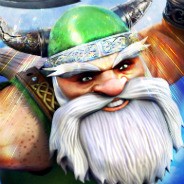Подчеркните сказуемое в каждом предложении. Составьте план пересказа с ключевыми словами. ELECTRONIC MEDIA
Electronic media were developed in the twentieth century and together with printed products (print media) became important for communicating information. This trend continues today and is characterized particularly by the use of computers and the Internet. In addition to the latest developments in the Internet and World Wide Web, electronic media also include the more conventional radio and television along with the corresponding forms of storage such as video and audio recordings on CD-ROM and DVD-ROM as well as animations.
Electronic media, as is the case with print media, also involve a chain of creation and transmission which depends on the specific form of the media. As a rule, the first stage in this process consists in generating the contents, for instance, for recordings onto audio or video tape. In some cases, information is converted from one medium to another, such as from conventional film to video. In the case of web pages though, content can also be computer-generated, thus allowing for the use of content from both the real and the virtual worlds.
Animations may describe scenes and “tracking shots”; in the end, running an animation results in a chronological sequence of pixel images, that is, almost a video flow. The description of an animation can be considerably more compact and efficient than the transmission of the video sequence. Therefore, the actual animation may only be executed on a final output device such as a powerful presentation computer.
In the preliminary phase, scripts are usually compiled (at least in a professional environment) as we know them from traditional film. In the case of electronic media products, the specific demands on the presentation must already be taken into account in the design stage. The reasons for this include the low local resolution (in comparison to print products) and the restriction of the output format (e.g., the size of the monitors or even windows within the overall monitor display).
Distribution may be in a saved form on data media (CD-ROM, video tape/audio tape, and storage medium for sound) or be live, for instance, for transmission of a concert or sports event. In both cases, an attempt is made to restrict the volume of data because of the limited capacity of the storage media or because of the limited bandwidth of communication channels. Compression techniques play an important role here. They permit the reduction of data without a noticeable loss of quality. The underlying transmission technologies may be varied, ranging from Internet connections via dedicated switched connections, such as satellite routes, or high-speed links via cable or glass fiber, to private or company networks, also with various technology (company television, Intranets).
The presentation systems, for instance, computer monitors, television screens, projector devices, audio reproduction systems (loudspeakers, headphones) are generally at the end of the transmission chain. Before these systems can respond though, codings and compression processes might have to be reversed with corresponding components (software and hardware) to represent the transmitted data. In the place of presentation systems, memory can also be found there that records the data transmitted, for instance, to reproduce it at another time.
The use and dissemination of electronic media can be regulated with protection rights which are, however, relatively easily infringed; this applies particularly to digital data where the copy is just as good as the original. Modern procedures deal with protective mechanisms against unauthorized copying both in the cryptography field, as well as in the digital watermarking field.
In a broader sense, electronic media also include in particular interactive applications:media which appear differently depending on user intervention. These include computer games, interactive simulations, or virtual reality applications. This leads directly on to multimedia concepts which are described in the following section. Please refer to chapter 11 for more details.
149
298
Ответы на вопрос:
1. a) 2. b) 3. b) 4. b) 5. a) 1) i have a few friends. two or three. 2) he has a lot of momey. he is a famous actor. 3)"do you take sugar in coffee? " "just a little" 4)"have you got a few cds? " "hundreds"5) it takes a few minutes.6)she speaks good kazakh. but only a little russian.
Реши свою проблему, спроси otvet5GPT
-
Быстро
Мгновенный ответ на твой вопрос -
Точно
Бот обладает знаниями во всех сферах -
Бесплатно
Задай вопрос и получи ответ бесплатно

Популярно: Английский язык
-
Some economists suspect that one of the reasons that economies in developing...
 Dffc04.08.2020 20:37
Dffc04.08.2020 20:37 -
Task 3 “ Passive Voice” Instructions: rewrite sentences using Present...
 Celebrat03.10.2020 00:38
Celebrat03.10.2020 00:38 -
5. Выполните письменно. Поставьте общий во ко всем предложениям. 1. Aristotle...
 MrCriMa04.12.2020 12:18
MrCriMa04.12.2020 12:18 -
What is longest river the world? Nick s brother is writer. It is 5 o...
 Насятя2817.03.2021 08:49
Насятя2817.03.2021 08:49 -
Товарищи сделать номер 2 и...
 nagor190417.06.2023 18:17
nagor190417.06.2023 18:17 -
Запишите в краткой форме: I do not have to-.............. He does not...
 German2284803.12.2020 09:14
German2284803.12.2020 09:14 -
Дайте полные ответы на вопросы: 1) what is the tallest building in new...
 максим167610.08.2022 12:13
максим167610.08.2022 12:13 -
Чтение. прочитайте текст. в 1 – 5 обведите букву (a, b или c), соответствующую...
 Artemkizaru13.10.2021 12:08
Artemkizaru13.10.2021 12:08 -
Нужно перевести на язык кто хорошо его знает не пользуюсь переводчиком...
 1Кто1то106.02.2022 22:25
1Кто1то106.02.2022 22:25 -
What information about the english language does the map give?...
 gazizkadyrzhan09.03.2023 00:21
gazizkadyrzhan09.03.2023 00:21

Есть вопросы?
-
Как otvet5GPT работает?
otvet5GPT использует большую языковую модель вместе с базой данных GPT для обеспечения высококачественных образовательных результатов. otvet5GPT действует как доступный академический ресурс вне класса. -
Сколько это стоит?
Проект находиться на стадии тестирования и все услуги бесплатны. -
Могу ли я использовать otvet5GPT в школе?
Конечно! Нейросеть может помочь вам делать конспекты лекций, придумывать идеи в классе и многое другое! -
В чем отличия от ChatGPT?
otvet5GPT черпает академические источники из собственной базы данных и предназначен специально для студентов. otvet5GPT также адаптируется к вашему стилю письма, предоставляя ряд образовательных инструментов, предназначенных для улучшения обучения.
